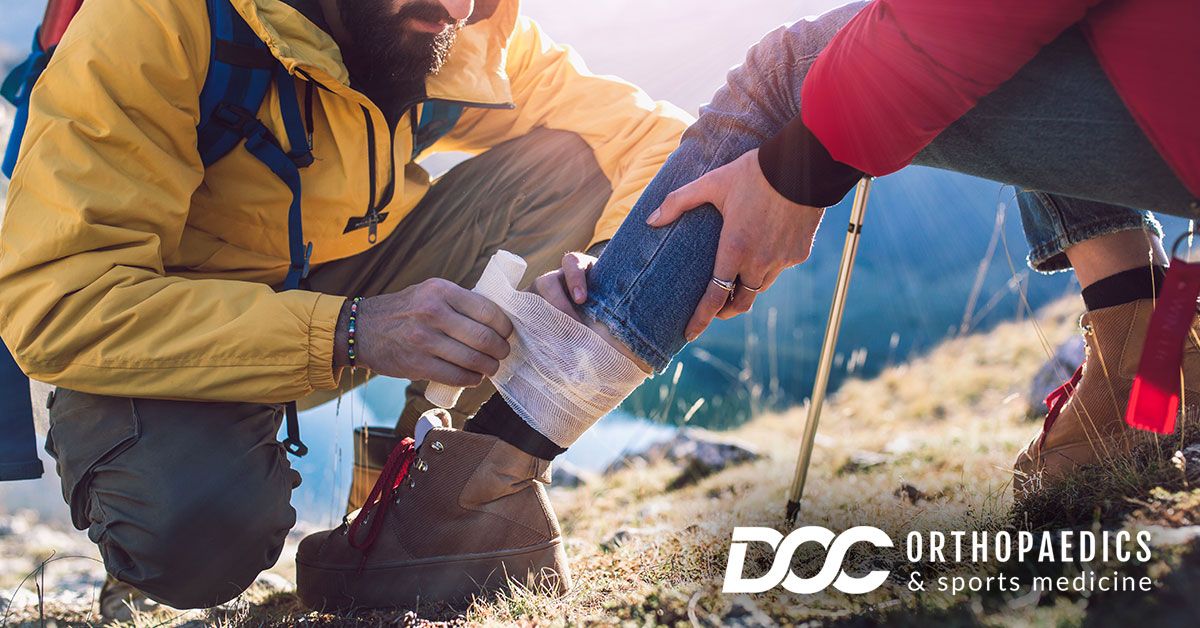
Hiking Injuries to Watch Out For
Hiking is one of those autumn activities that can be fun and engaging for people of any age or ability. With trails designed to accommodate the newest novice or the most experienced trekker, it’s relatively easy to select a trail that’s the right distance and difficulty to match your skills and experience.
But no matter how well you choose your trail, there are always bound to be minor pains and injuries that come along with long walks outside. Here are just a few you might want to be prepared to deal with on the trail:
Blisters
Blisters seem to be an unavoidable part of hiking. They form as the result of friction, causing fluid to accumulate and swell between irritated layers of skin. While blisters are low on the list of severe hiking injuries, these painful nuisances may lead to infection left untreated or treated improperly.
To avoid or prevent blisters, wear socks and properly fitting shoes that are appropriate for the terrain you’ll be hiking and the weather conditions. You should also do your best to keep your feet dry and consider wearing socks made of material that wicks moisture away from your feet.
If you feel a blister coming on, apply a piece of athletic tape and moleskin to prevent it from rupturing. If it has already ruptured, drain any remaining fluid and apply antibiotic ointment to reduce the risk of infection. Cover the affected area with an adhesive bandage and athletic tape.
Twisted or Sprained Ankle
Depending on where you choose to hike, you may encounter hazards such as slippery surfaces, uneven terrain, rocks, and hidden roots, or other obstacles that may increase your risk of a twisted or sprained ankle.
Proper footwear that offers ankle protection can help prevent this type of injury, along with a hiking stick or other form of stabilizer to help you balance your steps. If you twist your ankle, your inclination may be to walk it off. However, you should take a few minutes to evaluate the extent of your injury. If you suspect a sprain, remember the acronym RICE: rest, ice, compression, and elevation.
Knee Pain and Joint Inflammation
Much like runners, hikers often find themselves at risk for knee pain. Hikers who have had a prior injury, have weak or imbalanced leg muscles, kneecaps that don’t track correctly, log a lot of miles on the trail, or wear ill-fitting or worn-out shoes are especially susceptible.
Even without these factors, you may still experience knee pain and joint inflammation simply due to the stress that hiking puts on the joint, particularly when hiking downhill. In fact, research indicates that the compressive force between the tibia and femur (or knee joint) is as much as eight times your body weight when going downhill, setting the stage for hiking injuries.
If you experience knee pain while hiking, trekking poles can help redistribute some of the forces on your knees and ankles to your arms and shoulders. Perhaps the most effective way to reduce or eliminate knee pain is to strengthen the muscles that stabilize and support the knee joint: your hamstrings, quadriceps, glutes, and calf muscles. Wearing a knee brace or learning the proper way to apply Kinesio tape can help add external support and prevent hiking injuries.
Keeping the Pain Out Of Your Favorite Pastime
If you find yourself dealing with aches, pains, or injuries due to hiking – or if you anticipate increasing your hiking mileage this fall – you may want to consider investing in a great pair of shoes suited to your feet and your type of hiking, as well as some moisture-wicking socks, sunscreen, and a first aid kit. Before you get started, you might also want to visit a specialist at DOC Orthopaedics and Sports Medicine.
Since 1972, our specialists have been committed to providing exceptional orthopaedic care through innovative techniques, quality services, patient communication, and education. With specialties ranging from general orthopaedics and physical therapy to sports medicine and more, the doctors at DOC Orthopaedics and Sports Medicine can provide local expert guidance to avoid injury, as well as any necessary care for any orthopaedic disorder or injury to help keep your outdoor activities healthy and pain-free. Click here to schedule an appointment today.

